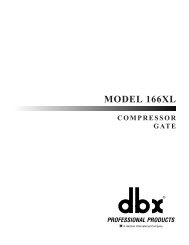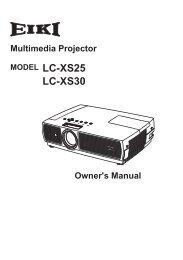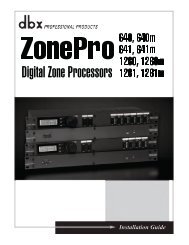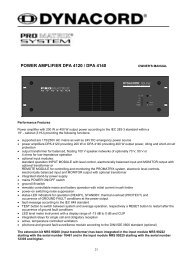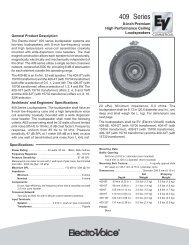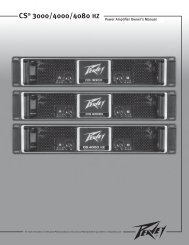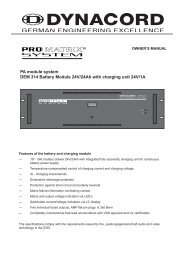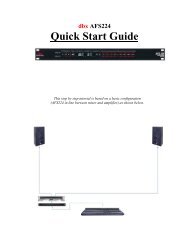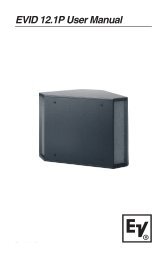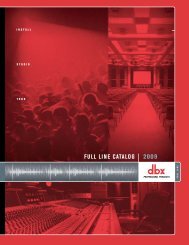You also want an ePaper? Increase the reach of your titles
YUMPU automatically turns print PDFs into web optimized ePapers that Google loves.
EARTHING<br />
The connection to earth (ground) in an audio system is important for<br />
two reasons:<br />
SAFETY - To protect the operator from high voltage electric shock,<br />
and<br />
AUDIO PERFORMANCE - To minimise the effect of earth (ground)<br />
loops which result in audible hum and buzz, and to shield the audio<br />
signals from interference.<br />
For safety it is important that all equipment earths are connected to<br />
mains earth so that exposed metal parts are prevented from carrying<br />
high voltage which can injure or even kill the operator. It is<br />
recommended that a qualified system engineer check the continuity of<br />
the safety earth from all points in the system including microphone<br />
bodies, turntable chassis, equipment cases, and so on.<br />
The same earth is also used to shield audio cables from external<br />
interference such as the hum fields associated with power transformers,<br />
lighting dimmer buzz, and computer radiation. Problems arise when the<br />
signal sees more than one path to mains earth. An ‘earth loop’ (ground<br />
loop) results causing current to flow between the different earth paths.<br />
This condition is usually detected as a mains frequency audible hum or<br />
buzz.<br />
To ensure safe and trouble-free operation we recommend the following:<br />
Have your mains system checked by a qualified electrician. If<br />
the supply earthing is solid to start with you are less likely to experience<br />
problems.<br />
Do not remove the earth connection from the console mains<br />
plug. The console chassis is connected to mains earth through the<br />
power cable to ensure your safety. Audio 0V is connected to the<br />
console chassis internally. If problems are encountered with earth loops<br />
operate the audio ‘ground lift’ switches on connected equipment<br />
accordingly, or disconnect the cable screens at one end, usually at the<br />
destination.<br />
Make sure that turntables are correctly earthed. A chassis earth<br />
terminal is provided on the console rear panel to connect to turntable<br />
earth straps.<br />
Use low impedance sources such as microphones and line level<br />
equipment rated at 200 ohms or less to reduce susceptibility to<br />
interference. The console outputs are designed to operate at very low<br />
impedance to minimise interference problems.<br />
Use balanced connections for microphones and mix output as<br />
these provide further immunity by cancelling out interference that may<br />
be picked up on long cable runs. To connect an unbalanced source to a<br />
balanced console input, link the cold input (XLR pin 3 or jack ring) to 0V<br />
earth (XLR pin 1 or jack sleeve) at the console. To connect a balanced<br />
XLR output to unbalanced equipment, link the cold output to 0V earth<br />
at the console.<br />
Use good quality cables and connectors and check for correct<br />
wiring and reliable solder joints. Allow sufficient cable loop to prevent<br />
damage through stretching.<br />
If you are not sure ... Contact your service agent or local Allen &<br />
Heath dealer for advice.<br />
Allen & Heath 30 <strong>XONE</strong>:<strong>3D</strong> User Guide



